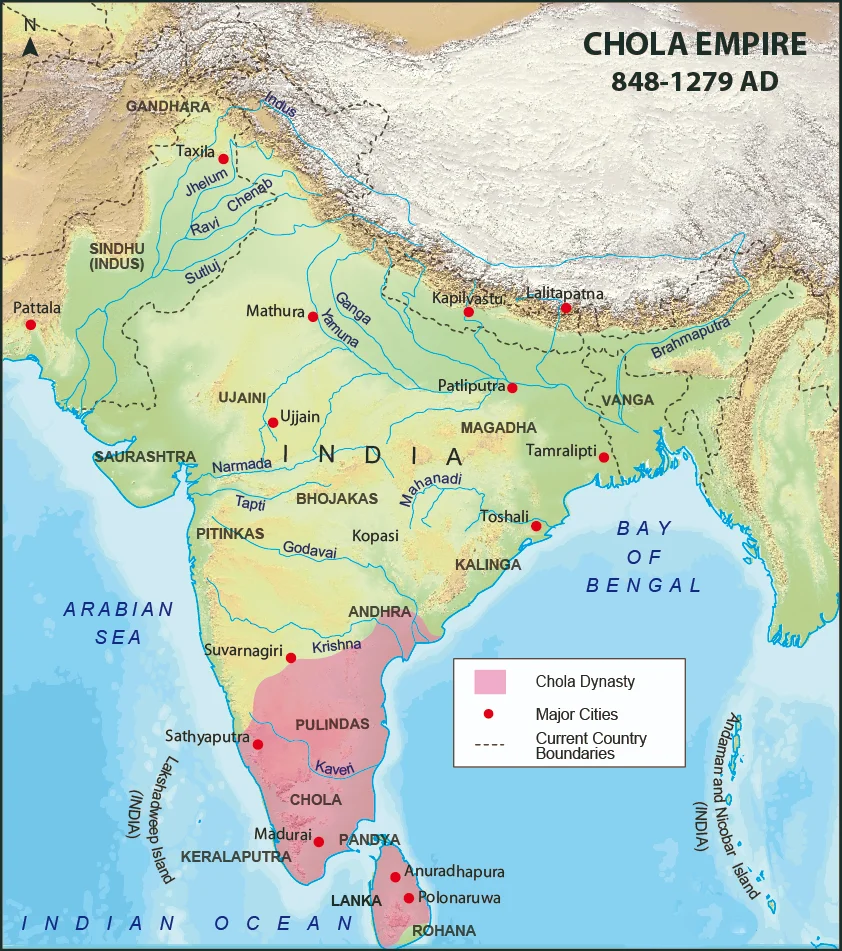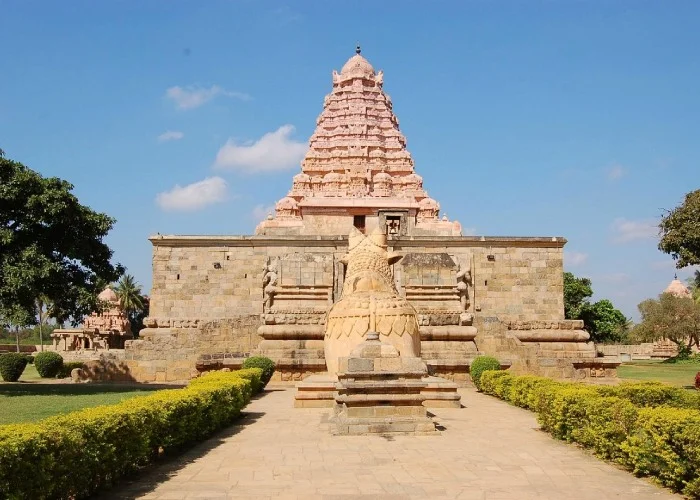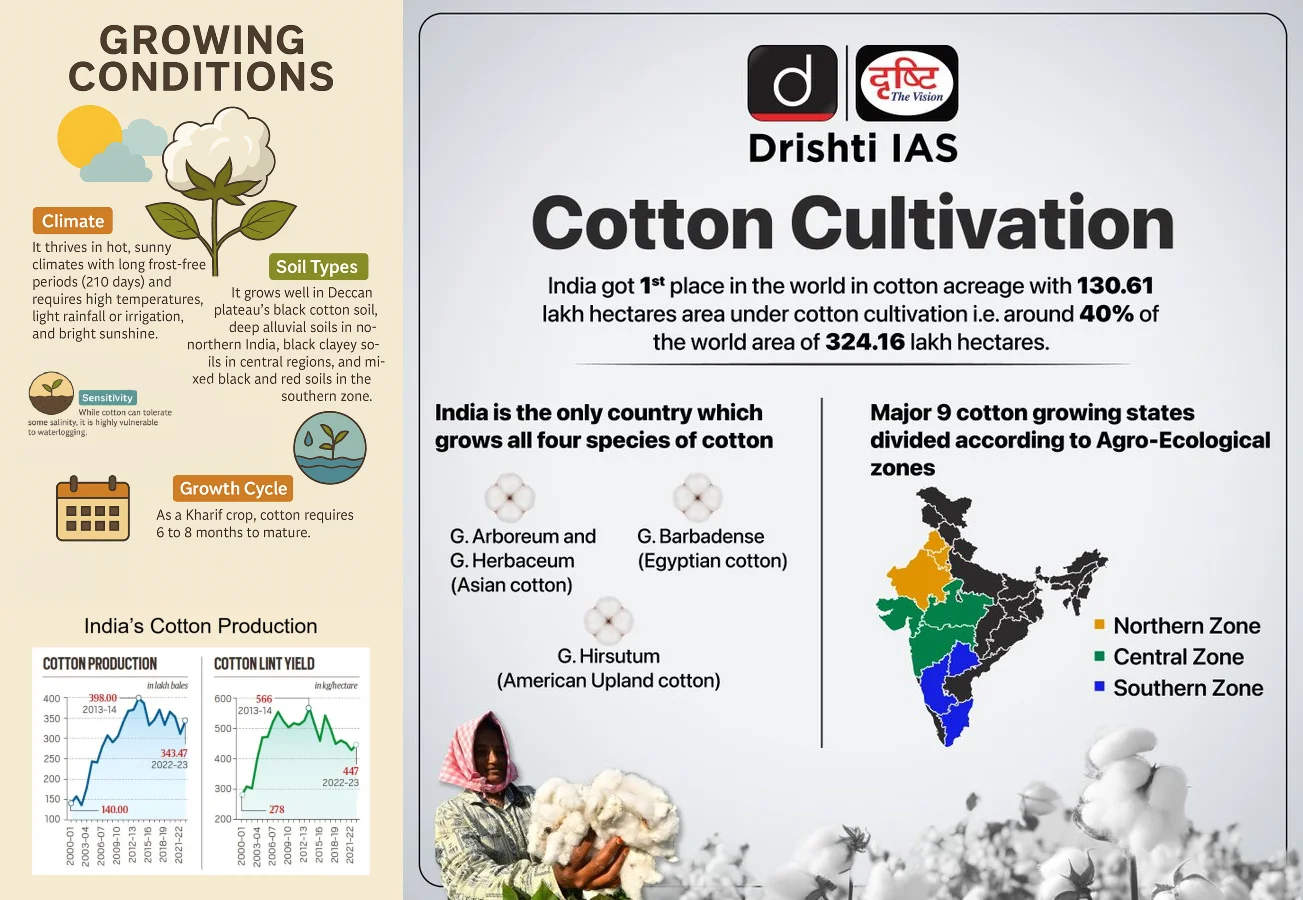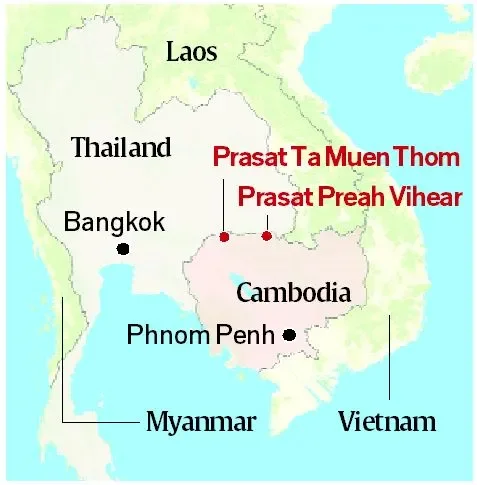Indian Economy
India Achieves 20% Ethanol Blending in Petrol
For Prelims: Ethanol Blending Programme, Pradhan Mantri JI-VAN Yojan, Carbon monoxide (CO), Hydrocarbons, Flex-Fuel Vehicles
For Mains: Ethanol Blending and Energy Security, Socio-economic and Environmental Impact of Biofuel Promotion.
Why in News?
India has reached a significant milestone in clean energy by achieving 20% ethanol blending in petrol in 2025 under the Ethanol Blending Programme (EBP).
- This rapid progress underlines the country’s commitment to energy security, rural income enhancement, and environmental sustainability.
What are the Key Factors Behind India’s Ethanol Blending Success?
- Policy and Regulatory Framework: The National Policy on Biofuels (2018, amended in 2022) advanced the 20% ethanol blending target from 2030 to 2025-26.
- The policy promotes use of diverse feedstocks: sugarcane, molasses, corn, damaged food grains, agricultural residues, and even waste biomass.
- Flexibility in feedstock choice ensures stable supply and minimizes competition with food security.
- The EBP Programme was institutionalized with regular monitoring and updates.
- The National Biofuel Coordination Committee (NBCC) oversees feedstock use based on surplus declarations.
- The Pradhan Mantri JI-VAN Yojana encourages production of advanced biofuels from agricultural and forestry residues, industrial waste, and algae, expanding the biofuel ecosystem.
- The policy promotes use of diverse feedstocks: sugarcane, molasses, corn, damaged food grains, agricultural residues, and even waste biomass.
- Infrastructure and Pricing Reforms:
- Ethanol Interest Subvention Schemes (EISS): Financial support (2018–2022) to set up molasses- and grain-based ethanol plants.
- Long-Term Offtake Agreements (LTOAs): The LTOAs signed by Public Sector Oil Marketing Companies (OMCs) ensured steady demand, timely payments, and market stability for Dedicated Ethanol Plants (DEPs).
- Administered Pricing Mechanism: Assured pricing for ethanol under the EBP Programme, encouraging private participation.
- GST Reduction: Reduction of Goods and Services Tax (GST) on ethanol from 18% to 5% helped lower production costs and encouraged higher ethanol production and blending.
- Amendments to Industries (Development & Regulation) Act,1953: Facilitated smooth interstate and intrastate movement of ethanol.
What are the Socio-Economic and Environmental Impacts of Ethanol Blending in India?
Socio-economic Impacts
- Enhanced Farmer Income and Rural Prosperity: Ethanol procurement till 2025 earned farmers Rs 1.18 lakh crore and distilleries Rs 1.96 lakh crore.
- New agro-processing and distillery jobs boosted rural employment in states like Uttar Pradesh, Maharashtra, and Bihar.
- Foreign Exchange Savings and Energy Independence: India saved Rs 1.36 lakh crore in forex by cutting crude oil imports.
- Ethanol Blending reduced India’s oil import dependency, which is important for managing trade deficits and geopolitical risk.
- Promotion of 'Make in India' and Self-Reliance: Ethanol Blending strengthens domestic energy infrastructure and fosters the bio-economy, aligning with Atmanirbhar Bharat goals.
- Price Stabilization and Crop Diversification: Absorption of surplus sugarcane and food grains (e.g., broken rice, maize) stabilizes farm gate prices.
- Facilitates crop diversification through incentives for non-food feedstocks like sweet sorghum, corn, and biomass.
Environmental Impacts
- Reduced Greenhouse Gas (GHG) Emissions: Approx. 700 lakh tonnes of CO₂ emissions avoided (till 2025), aiding India to reach Paris Agreement targets.
- Reduction in vehicular emissions of carbon monoxide (CO), hydrocarbons, and particulate matter with E10–E20 blends.
- Lower Air Pollution in Urban Areas: Blended fuel burns more completely, reducing tailpipe pollutants, significant for air-quality challenged cities like Delhi and Kanpur.
- Waste-to-Wealth Utilization: Conversion of damaged grains, molasses, crop residues, and agricultural waste into ethanol reduces landfill burden and methane release, aligns with circular economy principles.
What are the Challenges in Deeper Ethanol Integration in India?
- Feedstock Concerns and Food Security: Ethanol from food crops (sugarcane, rice, maize) may pressure food supplies, and in 2024-25 India became a net importer of maize to meet ethanol demand.
- Water Scarcity: Ethanol production is water-intensive, grain-based units use 8–12 litres of water per litre of ethanol.
- Sugarcane and molasses add to high water use, deforestation, and waste. Distilleries release vinasse, a toxic wastewater that can pollute rivers.
- Climate Sensitivity: Ethanol production depends heavily on climatic conditions affecting crop yields (e.g., droughts, unseasonal rains).
- Intensive mono-cropping for ethanol production, driven by profitability, may reduce soil fertility and alter land-use patterns, posing a threat to biodiversity.
- Industrial Pollution Concerns: Ethanol distilleries are classified as "red category" industries due to their high pollution risk.
- They emit harmful chemicals like acetaldehyde, formaldehyde, and acrolein, which can cause respiratory issues and cancer.
- In Andhra Pradesh, many units got environmental clearance without public hearings or proper assessments, and are often set up near residential areas.
- Infrastructure and Logistics Gaps: Ethanol infrastructure like pipelines, storage, and inter-state coordination needs upgrades.
- Blending remains uneven across OMCs and states, with rural areas lacking facilities, raising safety and quality concerns.
- Most existing vehicles in India are E10-compatible, E20 leads to marginal fuel efficiency loss unless engines are retuned.
- Scaling beyond E20 will require industry-wide transition to Flex-Fuel Vehicles (FFVs) and fuel distribution upgrades.
- Second and Third Generation Ethanol Technology: Still underdeveloped in India, it needs large-scale investment and viability demonstration.
How could India Scale Beyond E20 While Ensuring Sustainability?
|
Strategy Area |
Actionable Measures |
|
Feedstock Diversification |
|
|
Technology Transition |
|
|
Infrastructure Expansion |
|
|
Environmental Integrity |
|
Conclusion
India’s early achievement of the E20 target marks a significant pivot toward renewable energy and rural prosperity. Going forward, strategic foresight and inclusive policy design will be crucial in advancing ethanol blending beyond 20%, without compromising food security or environmental resilience.
|
Drishti Mains Question: India has achieved its E20 ethanol blending target. Discuss the factors behind this success and its implications for energy security and rural economy. |
UPSC Civil Services Examination, Previous Year Questions (PYQ)
Prelims
Q. Given below are the names of four energy crops. Which one of them can be cultivated for ethanol? (2010)
(a) Jatropha
(b) Maize
(c) Pongamia
(d) Sunflower
Ans: (b)
Q. According to India’s National Policy on Biofuels, which of the following can be used as raw materials for the production of biofuels? (2020)
- Cassava
- Damaged wheat grains
- Groundnut seeds
- Horse gram
- Rotten potatoes
- Sugar beet
Select the correct answer using the code given below:
(a) 1, 2, 5 and 6 only
(b) 1, 3, 4 and 6 only
(c) 2, 3, 4 and 5 only
(d) 1, 2, 3, 4, 5 and 6
Ans: (a)
Mains
Q. “Access to affordable, reliable, sustainable and modern energy is the sine qua non to achieve Sustainable Development Goals (SDGs)”.Comment on the progress made in India in this regard. (2018)


Indian History
1,000 Years of Rajendra Chola I's Maritime Expedition
For Prelims: Thiruvalangadu Inscription, Battle of Kandalur Salai, Cholas, Pandyas, Cheras, Chalukyas, Nagapattinam, Local Self-Government, Brihadeshwara Temple, Dravidian Temple Architecture, UNESCO, Gangaikonda Cholapuram, Airavateshvara Temple, Dakshina Meru, Mural Paintings, Bharatanatyam, Nataraja Statue
For Mains: Contribution of Chola dynasty in Indian history, Art & Architecture of Chola dynasty.
Why in News?
The Prime Minister visited Gangaikonda Cholapuram in Ariyalur district, Tamil Nadu, during the Aadi Thiruvathirai festival, and the Brihadisvara Temple (UNESCO World Heritage Site).
- He highlighted the Chola Empire’s democratic traditions, and released a commemorative coin marking 1000 years of Rajendra Chola I’s Gangetic expedition.
- The Aadi Thiruvathirai Festival commemorated 1,000 years of Rajendra Chola I's legendary maritime expedition to Southeast Asia and also marked the rich Tamil Shaiva Bhakti tradition.
What are the Key Facts About Rajendra Chola I?
- About: Rajendra Chola I (1014 to 1044 AD), son of Rajaraja Chola I, was one of the greatest rulers of the Chola Empire.
- He was the first Indian king to lead overseas military expeditions, extending Chola influence across South and Southeast Asia.
- Titles and Legacy: He assumed titles like Gangaikonda Cholan (after defeating the Palas in Bengal) and Kadaram Kondan (after naval victories in the Srivijaya Empire), Pandita Cholan, and Mudikondan.
- Founded a new capital, Gangaikondacholapuram, to commemorate his northern conquests.
- Built Brihadisvara Temple (Gangaikondacholeeswaram) and Chola Gangam Lake (Ponneri) in present-day Ariyalur, Tamil Nadu.
- Military and Naval Prowess: He reasserted control over Chera and Pandya regions; defeated Jayasimha II of Western Chalukyas, Tungabhadra River became the northern frontier.
- His conquests included Sri Lanka, Maldives, Nicobar, Lakshadweep, Kedah, Tambralinga, and Burma, establishing one of India's earliest blue-water navies.
- Trade, Culture, & Administration: Under his rule, Tamil merchant guilds like Manigramam and Ayyavole thrived, fostering trade and cultural exchange with China and Southeast Asia.
- Promoted Shaivism, patronized Chidambaram’s Nataraja Temple, yet maintained religious tolerance toward Vaishnavism and Buddhism.
Chola Dynasty
- One of the three major Tamil dynasties, alongside Cheras and Pandyas, and among the longest-ruling powers in South India.
- Founded by Vijayalaya Chola in the 9th century AD after defeating the Pallavas.
- The empire expanded across South India, Sri Lanka, and parts of Southeast Asia.
- It reached its peak under Rajaraja Chola I and Rajendra Chola I, known for military conquests and administrative excellence.
- Declined with the resurgence of the Pandyas in the 13th century.
- Key Rulers:
- Vijayalaya Chola: Founder, captured Tanjore.
- Aditya Chola I: Defeated Pallavas, annexed Tondaimandalam.
- Parantaka Chola I: Won battles, forged alliances, but suffered defeat at Takkolam.
- Rajaraja Chola I: Built Brihadeeswara Temple, expanded empire.
- Rajendra Chola I: Continued Rajaraja’s legacy, including naval conquests.
- Kulothunga Chola I: Strengthened administration, promoted trade.
- Rajaraja Chola II: Marked the decline of the Chola Empire.
Read More:
What are the Key Features of Chola Administration & Architecture?
Chola Administration
- Centralised Monarchy with Decentralised Governance: The Chola Empire maintained a centralised monarchy, headed by king and supported by a structured ministerial council, with high officials called Peruntaram and lower ones as Siruntaram.
- Capitals like Tanjore and Gangaikondacholapuram symbolised imperial power, and royal tours helped improve governance.
- Provincial and Local Administration: The empire was divided into Mandalams (provinces), Valanadus, Nadus and Urs (villages).
- Towns or Nagarams were run by merchant guilds (Nagarattar), while Nattar governed Nadus and Periyanattar managed Valanadus. Local self-governance was strong, especially at the village level.
- Village Self-Governance & Early Democratic Practices: Village assemblies- Sabhas (Brahmin villages) and Urs (non-Brahmin villages) had real power over revenue, justice, irrigation, and temples.
- A unique Kudavolai system (palm-leaf ballot), where the names of eligible candidates were placed in a pot and drawn by a child in public ensured transparent village elections.
- Eligibility to contest included owning tax-paying land (≥ ¼ veli), being aged 30–70, local residency, and knowledge of Vedas or administration.
- Disqualifications included alcoholism, crime, unpaid debts, kinship with officials, or prior misconduct.
- Accountability was ensured through annual audits.
- However, the system excluded women, landless labourers, and lower castes, reflecting its hierarchical and non-inclusive nature.
- Revenue Administration: The revenue system was managed by a department called Puravuvarithinaikkalam, with land surveys and classification.
- Temple lands and Ur Nattam (residential zones) were tax-free. The main source of revenue included land revenue (1/6th of produce), paid in cash or kind.
- Other taxes included tolls, customs, profession tax, marriage dues, salt pans, etc. Kulottunga I abolished tolls and earned the title "Sungam Tavirtta Cholan".
- Expenditure included royal court, army, irrigation, roads, canals.
- Military Administration: Cholas maintained a strong 4-fold army: Infantry, Cavalry, Elephants, Navy and key forces included Kaikkolaperumpadai (royal army) and Velaikkarar (bodyguards).
- Training was held at Kadagams (cantonments). The navy was powerful, securing Bay of Bengal dominance and influence in Sri Lanka and Southeast Asia.
- Trade and Economic Administration: Internal trade was organized via powerful merchant guilds like Manigramam, Ayyavole, and Nanadesis.
- Urban merchant bodies (Nagarams) played a role in civic and economic governance.
- Chola ports like Puhar supported flourishing maritime trade with West Asia, China, and Southeast Asia.
- Exports included textiles, spices, gems and imports included luxury items, horses. Urban guilds (Nagarams) aided civic governance.
Chola Art and Architecture:
- The Dravidian style of temple architecture reached its peak under the Cholas.
- The defining feature is the Vimana (tower over the sanctum). Temples typically included components like vimana, ardhamandapa, mahamandapa, and Nandimandapa (pavilion for Nandi).
- Early examples include temples at Narthamalai, Kodumbalur, and Srinivasanallur. Major temples like the Brihadisvara Temple in Thanjavur (by Rajaraja I), Gangaikondacholapuram (by Rajendra I), Airavatesvara Temple (Darasuram), and Kampaharesvara Temple (Tribhuvanam) show their architectural brilliance.
- Chola temples like Tanjore and Gangaikondacholapuram are adorned with large, finely executed sculptures.
- The Chola bronze sculptures, especially the image of Nataraja (dancing Shiva), are globally renowned for their aesthetic beauty, grace, and craftsmanship.
- Chola paintings were found on temple walls at Narthamalai and Tanjore, reflecting both religious and secular themes.
Brihadeeswarar Temple (Gangaikonda Cholapuram Temple) Ariyalur
- Built by Rajendra Chola I (1014 to 1044 AD)to commemorate his Gangetic expedition, this temple marked the shift of Chola capital from Thanjavur to Gangaikonda Cholapuram, which remained the imperial seat until 1279 AD.
- Dedicated to Lord Shiva, the temple (Gangaikondacholisvarar) reflects refined Dravidian architecture, surpassing even the earlier Brihadisvara Temple built by his father Rajaraja Chola I, symbolising both military glory and religious devotion.
- The annual Aadi Thiruvathirai festival celebrates Rajendra’s birth star (Thiruvadhirai) with Therukoothu performances and ceremonial offerings, reflecting the dynasty’s cultural legacy.
- Supported by inscriptions from 1027 & 1068 AD and the Esalam copper plates (1036 AD), the temple received sustained royal patronage under Chola rulers like Virarajendra.
- It was declared a UNESCO World Heritage Site in 2004, along with the Airavatesvara Temple at Darasuram. Thanjavur temple was earlier included in 1987, all together forming the Great Living Chola Temples.
|
Drishti Mains Question: Examine the architectural contributions of the Chola dynasty, particularly the Dravidian temple style. How did these architectural achievements reflect the empire’s cultural and religious values? |
UPSC Civil Services Examination Previous Year Question (PYQ)
Prelims
Q. The Nagara, the Dravida and the Vesara are the (2012)
(a) three main racial groups of the Indian subcontinent
(b) three main linguistic divisions into which the languages of India can be classified
(c) three main styles of Indian temple architecture
(d) three main musical Gharanas prevalent in India
Ans: (c)
Mains
Q: (a) Discuss the Tandava dance as recorded in the early Indian inscriptions.
(b) Chola architecture represents a high watermark in the evolution of temple architecture. Discuss. (2013)
Q. Indian philosophy and tradition played a significant role in conceiving and shaping the monuments and their art in India. Discuss. (2020)


Agriculture
Mission for Cotton Productivity
For Prelims: Mission for Cotton Productivity, Textile Vision 2030, "5F" approach, Bt (Bacillusthuringiensis) cotton, Bollgard-II,PM MITRA Scheme ,Cotton Corporation of India (CCI),Digital Agriculture Mission 2021–25,Cott-Ally Mobile App
For Mains: Need of the Mission for Cotton Productivity, Government initiatives for the Development of Cotton Sector.
Why in News?
To strengthen India’s textile value chain and enhance global competitiveness, the Government has launched the ‘Mission for Cotton Productivity’ in line with the Vision 2030 for the textile industry.
- Textile Vision 2030 for India aims at positioning India as a global textiles manufacturing hub by building a USD 250 billion textile industry and achieving USD 100 billion in global textile exports by 2030.
What is the Mission for Cotton Productivity?
- About: It is a five-year initiative launched by the Government of India in the Union Budget 2025-26 to significantly enhance cotton production in the country.
- It will provide scientific and technological support to cotton farmers, aligning with the Government's 5F vision- Farm to fibre, fibre to factory, factory to fashion, fashion to foreign for the textile sector.
- It seeks to increase farmers' incomes while ensuring a consistent supply of high-quality cotton, vital for revitalizing India's traditional textile industry.
- The Department of Agricultural Research & Education (DARE) is the nodal agency for implementing the mission, with the Ministry of Textiles as a key partner.
- Key Objectives:
- Enhance cotton productivity by adopting advanced scientific methods and developing climate-smart, pest-resistant, and high-yielding varieties, including Extra Long Staple (ELS) cotton.
- ELS cotton is known for its long fibers, superior strength, softness, and durability.
- Utilize advanced breeding techniques and biotechnology tools to improve fibre quality.
- Equip farmers with cutting-edge technology to build resilience against climatic and pest-related challenges.
- Enhance cotton productivity by adopting advanced scientific methods and developing climate-smart, pest-resistant, and high-yielding varieties, including Extra Long Staple (ELS) cotton.
What are the Reasons Driving the Need for Mission for Cotton Productivity?
- Low Productivity: India ranks 1st globally in cotton acreage, with 130.61 lakh hectares under cultivation, accounting for 40% of the world’s total cotton area (324.16 lakh hectares).
- However, in terms of productivity, India stands 39th in the world, with an average yield of just 447 kg/ha.
- Rising Dependence on Imports: Cotton imports surged from USD 518.4 million in 2023–24 to USD 1.04 billion in 2024–25, while exports fell from USD 729.4 million to USD 660.5 million.
- Stagnation after Success: Despite the success of Bt (Bacillus thuringiensis) cotton and Bollgard-II technologies, India has not approved any new genetically modified (GM) cotton variants since 2006.
- Infestation: The decline in cotton production is mainly due to the increased infestation of pink bollworm (PBW).
- Initially, Bt cotton offered effective pest control, but over time, PBW developed resistance to Bt proteins.
- Missed Opportunities in Global Markets: Countries like the US and Brazil, with robust biotech adoption, are capturing the export space once dominated by India.
What are the Key Factors that Influence Cotton Cultivation in India?
- About Cotton: Cotton is a fluffy staple fiber that grows in a boll around its seeds.
- In northern India, cotton is planted between April and May, while in the southern regions, the season is delayed due to monsoon patterns.
- Production: India leads the world in cotton acreage, accounting for around 40% of global cotton cultivation. The major cotton-producing regions in India are:
- India ranks second globally in cotton production, with an estimated output of 343.47 lakh bales (5.84 MMT) in 2022-23, contributing to 23.83% of global cotton production.
- India ranks 39th in global cotton yield, lagging behind countries like the USA, China, and Brazil.
- India is the second-largest cotton consumer globally, accounting for 22.24% of world consumption in 2023. Less than 10% of India’s cotton consumption is imported by the textile industry.
- Key Factors Influencing its Cultivation:
- Cotton can tolerate temperatures up to 43°C but temperatures below 21°C are detrimental.
- Cotton requires 210 frost-free days and 50 to 100 cm of rainfall for optimal growth.
- Warm days and cool nights with large diurnal temperature variations during the fruiting period promote better boll and fiber development.
- Cotton is grown in various soil types, including well-drained deep alluvial soils in the northern region, black clayey soils in the central region, and black and mixed soils in the southern zone.
- Cotton is semi-tolerant to salinity and sensitive to waterlogging, preferring light, well-drained soils that retain moisture.
India’s Initiatives For Development of the Cotton Sector
What Steps are Needed to Make India Self-reliant in Cotton?
- Accelerate R&D and Biotech Approvals : Fast-track approval of next-generation GM cotton (Bt 3.0, herbicide-tolerant traits, RNAi technology) to combat pink bollworm (PBW) resistance.
- Brazil and the US have adopted advanced biotech traits, boosting yields beyond 1,500 kg/ha.
- Promote Extra Long Staple (ELS) Cotton: Premium MSP, contract farming models, and cluster-based approaches are essential to boost ELS cotton adoption and enhance export competitiveness.
- Agricultural Export Policy (2018) emphasized production of export-oriented varieties.
- Integrated Pest and Farm Management : Scale up Integrated Pest Management (IPM) and area-wide PBW eradication using pheromone traps, sterile male techniques, and crop rotation.
- ICAR-CICR’s PBW management protocols have shown success in Maharashtra.
- Enhance Market and Export Competitiveness: Brand “Kasturi Cotton India” to promote premium quality and sustainability in global markets.
- Set up cotton quality testing hubs and encourage cluster-based textile parks (PM-MITRA).
- Digital Cotton Ecosystem : AI-driven pest alerts, remote sensing for yield monitoring, and blockchain for traceability can modernize the cotton value chain.
- Digital Agriculture Mission 2021–25 advocates the use of emerging technologies in agriculture.
- Climate-Smart Cotton Cultivation : Adopt micro-irrigation, organic farming, and precision nutrient management to improve yields and lower input costs.
- Ashok Dalwai Committee recommends climate-resilient practices to address water stress.
Conclusion:
If implemented with urgency and scientific rigour, the Mission can lift yields, cut import dependence, revive exports, raise farmer incomes, and green the cotton value chain, directly advancing SDG‑2 (Zero Hunger & productivity), SDG‑8 (Decent Work & growth), SDG‑9 (Innovation).
|
Drishti Mains Question: Mission for Cotton Productivity is a strategic initiative to boost India's textile value chain.Discuss the key objectives and implementation strategy of this mission in the context of Textile Vision 2030. |
UPSC Civil Services Examination Previous Year Question (PYQ)
Prelims:
Q. Which of the following activities constitute real sector in the economy? (2022)
- Farmers harvesting their crops
- Textile mills converting raw cotton into fabrics
- A commercial bank lending money to a trading company.
- A corporate body issuing Rupee Denominated Bonds overseas.
Select the correct answer using the code given below:
(a) 1 and 2 only
(b) 2, 3 and 4 only
(c) 1, 3 and 4 only
(d) 1, 2, 3 and 4
Ans: (a)
Mains:
Q. Analyse the factors for highly decentralized cotton textile industry in India. (2013)


Important Facts For Prelims
International Tiger Day 2025
Why in News?
International Tiger Day (also known as Global Tiger Day) on 29th July raises awareness about tiger (Panthera tigris) conservation and also highlights the Amur tiger (Panthera tigris altaica), the world’s largest wild cat.
History of International Tiger Day
- Global Tiger Day was instituted at the 2010 Saint Petersburg Tiger Summit, Russia where 13 tiger-range countries, including India, Bhutan, Nepal, Malaysia, and Bangladesh came together in response to the sharp decline in tiger populations.
- The summit launched the Tx2 initiative, aiming to double the wild tiger population by 2022.
How has India Contributed to the Conservation of Tigers?
- Need for Conservation: In the early 1900s, India had around 1 lakh tigers. By 1972, the number had dropped sharply to just 1,827.
- Alarmed by this, India launched Project Tiger in 1973 to protect Bengal tigers (Panthera tigris tigris) and their habitats.
Project Tiger
- About: It is a Centrally Sponsored Scheme, provides 60% Central Assistance to most states for non-recurring expenses and 50% for recurring costs, with states matching the rest.
- Primary Aim: Ensure a viable population of Bengal tigers in natural habitats.
- Key Steps Taken: Establishment of tiger reserves with a core-buffer strategy to protect habitats in core zones while allowing sustainable human activities in buffer zones.
- The National Tiger Conservation Authority (NTCA) set up under the Wildlife Protection Act, 1972, oversees Project Tiger and conducts the national tiger census every four years (last census done in 2022).
- Progress: Launched in 1973 with 9 reserves, Project Tiger now covers over 50 reserves across 18 states, spanning about 2.2% of India’s land.
- Tiger numbers rose from 1,827 in 1973 to an estimated 3,682 (avg) with an upper limit of 3,925 as per 2022 data.
- Madhya Pradesh has the largest tiger population, followed by Karnataka, Uttarakhand, and Maharashtra.
- Reserves with the highest tiger numbers are Corbett (Uttarakhand), Bandipur (Karnataka), Nagarhole (Karnataka), and Bandhavgarh (Madhya Pradesh).
- Nagarjunsagar-Srisailam Tiger Reserve (Andhra Pradesh) is the largest tiger reserve in India
- India now hosts around 75% of the world’s tiger population. The population has more than doubled in the last two decades, with a growth rate of 6.1% per year.
- The Project Tiger and Project Elephant Scheme has been merged from FY 2023-24 and is now known as Project Tiger & Elephant.
- Tiger numbers rose from 1,827 in 1973 to an estimated 3,682 (avg) with an upper limit of 3,925 as per 2022 data.
- Iconic Figures:
- Machhli (T-16) a famous tigress from Ranthambore, often called the 'Queen Mother of Tigers' and 'Tigress Queen of Ranthambore.' She became the poster face of Project Tiger.
- Kailash Sankhala, known as the Tiger Man of India, was the first director of Project Tiger.
- Cultural Significance: The Royal Bengal Tiger is India’s national animal and is deeply rooted in Indian mythology and pride.
Amur Tiger
- The Amur tiger, or Siberian tiger is the largest tiger subspecies and the biggest wild cat on Earth.
- Native to Russia’s Far East, it's adapted to harsh winters with thick fur and body fat. Solitary and territorial, it preys on wild boar, deer, and sometimes bears. It faces threats like poaching and habitat loss.
- In the Russian Far East, indigenous groups like the Udeghe, Nanai, and Oroch spiritually revere the Amur tiger, seeing it as a forest guardian.
- This mirrors tiger-linked beliefs in South Asia, like Bon Bibi in the Sundarbans.
UPSC Civil Services Examination, Previous Year Questions (PYQs)
Prelims
Q. Among the following Tiger Reserves, which one has the largest area under “Critical Tiger Habitat”? (2020)
(a) Corbett
(b) Ranthambore
(c) Nagarjunasagar-Srisailam
(d) Sundarbans
Ans: (c)
Q. Consider the following protected areas: (2012)
- Bandipur
- Bhitarkanika
- Manas
- Sunderbans
Which of the above are declared Tiger Reserves?
(a) 1 and 2 only
(b) 1, 3 and 4 only
(c) 2, 3 and 4 only
(d) 1, 2, 3 and 4
Ans: (b)


Important Facts For Prelims
Indian Railways Tests First Hydrogen-Powered Coach
Why in News?
Indian Railways has successfully tested its first hydrogen-powered coach at the Integral Coach Factory (ICF) in Chennai, as part of its “Hydrogen for Heritage” initiative.
- The project involves converting two 1600 HP diesel power cars into Hydrogen Fuel Cell systems and setting up a 3,000 kg hydrogen refuelling station at Jind, Haryana.
- The design and testing are being carried out by the Research Designs and Standards Organisation (RDSO).
What are the Key Benefits of Hydrogen as a Power Source?
- High Energy Density and Versatility: Hydrogen possesses one of the highest energy-to-weight ratios among known fuels, making it exceptionally well-suited for heavy-duty transportation sectors.
- Furthermore, it is versatile and can be used in fuel cells, internal combustion engines, or as a feedstock in industrial processes.
- Zero Emission Energy Carrier: When used in fuel cells, hydrogen emits only water vapor as a byproduct, making it a critical enabler of clean mobility and industrial decarbonization.
- Supports Renewable Energy Integration: Hydrogen acts as an energy storage vector, allowing excess electricity from intermittent renewable sources (like solar and wind) to be stored in the form of hydrogen via electrolysis.
- This helps in grid stabilization, peak shaving, and achieving round-the-clock (RTC) power supply—a key requirement for energy reliability and sustainability.
- Decarbonization of Hard-to-Abate Sectors: Green hydrogen enables deep decarbonization of hard-to-abate sectors such as steel manufacturing, cement production, oil refining, fertilizers, and chemical industries, where direct electrification is either technically or economically unfeasible.
Note: Hydrogen is central to India’s strategy to achieve energy independence and Net Zero emissions by 2070. India’s National Green Hydrogen Mission aims to make the country a global hub for green hydrogen production and export, positioning India as a key player in the emerging hydrogen economy.
- Hydrogen Fuel Cell: It is an electrochemical device that converts chemical energy of hydrogen into electricity through a reaction with oxygen, with water and heat as the only by-products.
- Applications of Hydrogen Fuel Cell:
- Transportation: Powering cars, buses, trucks, trains, and drones.
- Stationary Power: Backup and off-grid power for homes, businesses, and data centers.
- Portable Power: Charging laptops, phones, and equipment in remote areas.
- Industrial Use: Forklifts, cranes, and machinery in warehouses and factories.
- Space Exploration: Powering spacecraft (e.g., NASA uses hydrogen fuel cells particularly in their crewed space missions like the Apollo).
What are the Key Technological Developments in Indian Railways?
- Artificial Intelligence & Automation
- ‘Gajraj’ Elephant Detection System: AI-based tool using optical fiber to detect elephant movement near tracks.
- AI in Namo Bharat (RRTS) Trains: AI-enabled security surveillance and automated schedule optimization.
- Rail Safety Technologies
- Kavach (Automatic Train Protection): Prevents signal passing at danger (SPAD) and over-speeding.
- Uses RFID to apply brakes automatically.
- Certified at SIL-4 level, error probability: 1 in 10,000 years.
- Ultrasonic Flaw Detection (USFD): Detects rail cracks and flaws to prevent derailments.
- Used for real-time track condition monitoring.
- Kavach (Automatic Train Protection): Prevents signal passing at danger (SPAD) and over-speeding.
- Signalling & Interlocking Systems
- Electronic Interlocking (EI): Widely adopted to reduce human error and automate signal control.
- Automatic Block Signalling (ABS): Railway signaling system that allows for increased train traffic on high-density routes by enabling multiple trains to operate simultaneously in the same direction.
- Sustainability:
- Bio-toilets: Bio-toilets in Indian Railways use anaerobic bacteria to decompose human waste in a sealed biodigester tank, converting it into water and gases.
- Developed by DRDO, these systems prevent open discharge on tracks, improving hygiene and reducing corrosion.
- Bio-toilets: Bio-toilets in Indian Railways use anaerobic bacteria to decompose human waste in a sealed biodigester tank, converting it into water and gases.
UPSC Civil Services Examination, Previous Year Question (PYQ)
Q. With reference to bio-toilets used by the Indian Railways, consider the following statements: (2015)
- The decomposition of human waste in the bio toilets is initiated by a fungal inoculum.
- Ammonia and water vapour are the only end products in this decomposition which are released into the atmosphere.
Which of the statements given above is/are correct?
(a) 1 only
(b) 2 only
(c) Both 1 and 2
(d) Neither 1 nor 2
Ans: (d)


Place In News
The Preah Vihear and Prasat Ta Muen Thom
Thailand and Cambodia have called a ceasefire after clashes near Preah Vihear and Prasat Ta Muen Thom in the Southeast Asian Emerald Triangle, a region long disputed due to colonial-era borders and cultural claims.
- Southeast Asian Emerald Triangle: It refers to a geographically sensitive area where the borders of Thailand, Cambodia, and Laos meet, known for its dense forests and ancient temples.
- Preah Vihear: It is a Hindu shrine dedicated to Lord Shiva, located in Cambodia, along the Thailand-Cambodia border in the Dangrek Mountains.
- The temple was built around the 11th century by the Khmer kings Suryavarman I and II, it is now a UNESCO World Heritage Site.
- The International Court of Justice (ICJ) ruled in 1962 (reaffirmed in 2013) that the temple belongs to Cambodia. However, Thailand has rejected the ICJ’s jurisdiction, keeping tensions alive.
- Prasat Ta Muen Thom: It is a 12th-century temple dedicated to Lord Shiva, later adapted for Buddhist use. It is part of a temple group that includes Prasat Ta Muen (a pilgrim rest house) and Prasat Ta Muen Tot (a hospital shrine).
- Built by Khmer kings Udayadityavarman II and Jayavarman VII, the complex reflects Angkorian architecture.
| Read more: Angkor City in Cambodia |


Rapid Fire
India’s First Private Test Facility for Heavy Water
TEMA India, a firm based in Mumbai, has opened India's first private facility for testing heavy water upgrade equipment, marking a new phase of public-private collaboration in the nuclear sector.
- The facility will manufacture and test distillation columns used to upgrade depleted heavy water (D₂O) essential for Pressurised Heavy Water Reactors (PHWRs).
- Usually, Bhabha Atomic Research Centre (BARC) handles the testing, but this move to the private sector aims to cut project timelines by 1–2 years.
- Heavy Water (D₂O): Also known as deuterium oxide, it consists of two deuterium atoms and one oxygen atom and it is not radioactive.
- Deuterium, a heavier stable isotope of hydrogen, present in hydrogen and hydrogen bearing compounds like water, hydrocarbons, etc.
- Nuclear reactors use heavy water during construction and refueling. It acts as both a coolant and a moderator in nuclear fission and must be 99.9% pure.
- During operation, the heavy water gets depleted and is upgraded through distillation to restore its purity and maintain efficient reactor performance.
- India is the largest global producer of heavy water.
- India’s Nuclear Power: The nuclear power contributes about 3% to the total electricity generated in the country. India currently has 24 operational reactors (with an installed capacity of 8,780 MW), with plans to reach 22.4 GW by 2032 and 100 GW by 2047.
| Read more: India's Nuclear Energy Roadmap |


Rapid Fire
Veer Parivar Sahayata Yojana 2025
The National Legal Services Authority (NALSA) launched the Veer Parivar Sahayata Yojana 2025, a nationwide legal aid scheme dedicated to soldiers, veterans, and their dependents.
- Objective: It aims to provide free legal aid, advice, and support to army and paramilitary personnel and their families, acknowledging their unique service-related constraints.
- It will enable online application filing, video consultations, and dispute resolution through e-Lok Adalats and online mediation.
- Pan-India Reach: The scheme is designed to operate across all Indian states ensuring inclusive national coverage.
- Constitutional Basis: It is rooted in Article 39A of the Constitution, ensuring equal justice and legal aid.
- Legal Aid Infrastructure: NALSA will set up legal aid clinics at the district, state, and national levels.
NALSA
- About: NALSA is a statutory body established in 1995 under the Legal Services Authorities Act, 1987.
- It monitors and evaluates legal aid programs, ensuring legal services for eligible groups like Women, Children, SC, ST, EWS, Industrial Workers, Persons with Disabilities, and Transgender Individuals, as per Section 12 of the Act.
- Tiered Structure: Legal Services Institutions have been established at all levels, ranging from Taluk Courts to the Supreme Court.
| Read More: Supreme Court Legal Services Committee |













